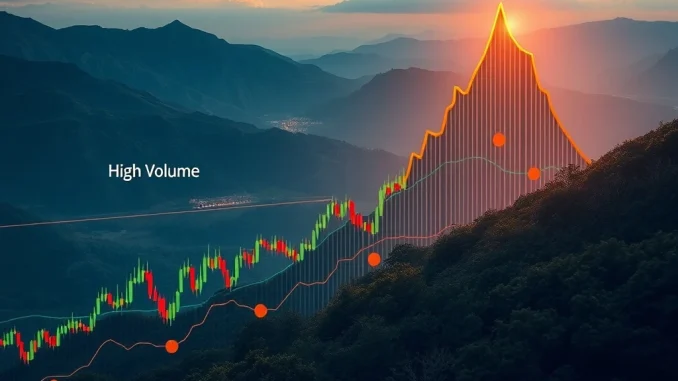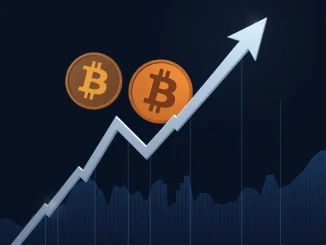
In the fast-paced world of cryptocurrency trading, significant market movements can lead to dramatic outcomes for traders, especially those using leverage on platforms offering Perpetual Futures. The last 24 hours have seen a stark reminder of this reality, with a massive wave of Crypto Liquidation events sweeping across major assets. If you’re trading with leverage, understanding these events is crucial.
What is Crypto Liquidation and Why Does it Happen?
Before diving into the numbers, let’s quickly touch on what liquidation means in the context of perpetual futures. When you trade with leverage, you’re borrowing funds to increase your position size. If the market moves against your leveraged position, your margin (the collateral you put up) might no longer be sufficient to cover potential losses. When your position’s loss exceeds your margin, the exchange automatically closes (liquidates) your position to prevent further losses. This protects both you (from going into extreme debt) and the exchange.
Liquidations often happen rapidly during periods of high volatility or sudden price swings. A large move in one direction can trigger a cascade of liquidations, further accelerating the price change.
The 24-Hour Liquidation Snapshot: Shorts Hit Hard
Looking at the data from the past day reveals a clear trend: short positions bore the brunt of the liquidations. This suggests that the market saw unexpected upward price action that caught bearish traders off guard. Here’s the breakdown of significant liquidations:
- Bitcoin Liquidation: BTC traders saw the largest impact, with $234.19 million in perpetual futures positions liquidated. A striking 94.30% of this total were short positions.
- Ethereum Liquidation: ETH followed suit, experiencing $151.56 million in liquidations. Similar to Bitcoin, the vast majority were shorts, accounting for 90.44%.
- XRP Liquidation: XRP perpetual futures also saw notable liquidations, totaling $13.17 million. Again, short positions were dominant at 88.36%.
Collectively, these three assets alone accounted for over $398 million in liquidated positions within just 24 hours, with shorts making up around 90% of the total.
Why Were So Many Short Positions Liquidated?
The high percentage of short liquidations points to a scenario where prices moved up significantly, forcing traders who were betting on a decline to close their positions at a loss. Several factors could contribute to this:
- Unexpected positive news or market sentiment shifts.
- A short squeeze, where forced buying from liquidations drives the price up further.
- General market momentum turning bullish.
Actionable Insights for Perpetual Futures Traders
This data serves as a crucial reminder for anyone trading Perpetual Futures:
- Manage Leverage Carefully: High leverage amplifies both profits and losses. The higher your leverage, the closer your liquidation price is to your entry price.
- Always Use Stop-Loss Orders: A stop-loss order automatically closes your position if the price reaches a certain level, limiting your potential loss and helping you avoid liquidation.
- Understand Market Sentiment: While not always predictable, being aware of the prevailing market mood can help you assess the risks of taking a long or short position.
- Don’t Bet Against Strong Momentum: As seen with the high Bitcoin Liquidation and Ethereum Liquidation numbers, betting heavily against a strong upward move can be costly.
Challenges and Benefits of Perpetual Futures
The primary challenge, as highlighted by these liquidation numbers, is the inherent risk of leverage and volatility. Liquidations can happen fast and wipe out significant capital. However, the benefit lies in the ability to potentially achieve higher returns with a smaller initial capital outlay and the flexibility to trade both rising and falling markets without expiry dates.
Summary: A Costly Day for Shorts
The past 24 hours delivered a significant blow to short-biased traders in the perpetual futures market. The substantial Crypto Liquidation, particularly for Bitcoin, Ethereum, and XRP, underscores the volatile nature of leveraged trading. Events like these are powerful lessons in risk management, emphasizing the need for caution, proper leverage, and the strategic use of stop-loss orders to navigate the unpredictable waves of the crypto market.



